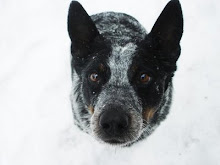The beautiful Rikki Ducornet began her week here at
Vermont Studio Center by reading to us rapt writers from her imaginative book
of little prose pieces titled One Marvelous Thing. Read an interview with her and read the title story of her book at the links above. At her craft talk, she shared her writing
process, a deeply intuitive process that listens to her dreams and her
memory. She taps into places that give
her a power source – accessed through meditation, imagination, primal memories,
and creatures in their world. These
places of power are where dreams and the hot material for her writing come
from; this explains why a sudden idea can dissipate so quickly, as dreams do
once we wake. She urged us to take a
great leap, to work on what catches fire, and to leave something behind.
She said we are the dreamers - and there is a great deal
of rational rooted in the imagination.
This idea of nesting the irrational in the rational,
the imagination with the concrete, is the play and tension that I want to develop
in my own writing this week. Now, with 6
days left, I’m cutting up, line by line, poems of similar subject matter or imagery
and exploring wild new combinations of phrasing and idea that question the definitions
of irrationality and meaning. How can recombining lines from different poems
access a place of intuition and the subconscious? Try it yourself and see -






